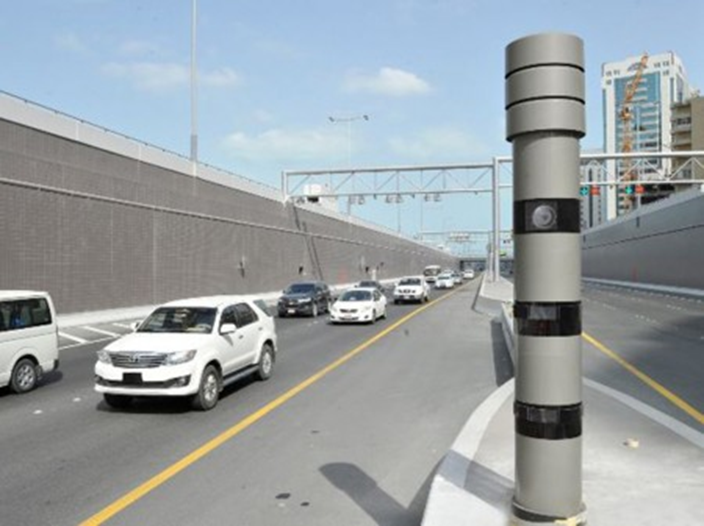Dubai has many of the same driving regulations and challenges as many other places in the world, but there are some exceptions and unique situations that must be taken into consideration when driving in Dubai. Dubai offers a “Light Vehicle Motor Handbook” that can be found online that is invaluable to anybody who is planning to drive in Dubai. This article will outline some of the most important suggestions and regulations that must be observed when driving in Dubai.
According to their own traffic handbook, Dubai has a high number of vehicle crashes, so it is very important to drive carefully and adhere to safety guidelines. Sand can drift into the road, reducing traction and causing a dangerous driving situation similar to aquaplaning. Both water and sand on the road should be avoided if possible, and must be driven over slowly if this is not possible. Flash flooding is also a possibility when it rains, so drivers should avoid driving in heavy rains and never drive through standing or flowing water. Safely belts must always be worn by both the driver and person seated next to the driver in any vehicle, though it is recommended that all drivers wear safety belts. Rear-facing car seats are required for small children and all children under the age of 13 must sit in the rear of the vehicle.
It is illegal to be under the influence of any substance while driving in Dubai. This includes both drugs and alcohol and there is a zero tolerance policy for both. Driving while tired is also illegal, as this can seriously impair a driver’s judgment and cause them to be unsafe.
Over 80% of all vehicle crashes in Dubai are the result of excessive speed. It is illegal to drive faster than any posted speed limit while in Dubai, though certain road conditions such as sand, rain, or fog reduce the speed that can be safely driven. There are also certain standard speed limits for different types of roads that are outlined below:
- Parking areas and service roads – 25 K/h
- Urban single-lane roads – 40 K/h
- Urban double-lane roads – 60 K/h
- Rural roads – 100 K/h
- Freeways – 120 K/h
It is recommended that drivers avoid all distractions while driving. This includes loud music, portable TVs and DVD players, and dash-mounted navigation systems (which should only be used while parked.) The use of cell phones is not explicitly banned, but is not recommended. A high percentage of crashes were the result of drivers being distracted while on the phone.
Headlights must always be used after dark in Dubai. They are also required any time conditions make it difficult to see the road, such as rain, fog, or sand. High-beams are recommended on dark, rural roads, but may not be used any time another vehicle is in sight or on urban roads with overhead illumination.



